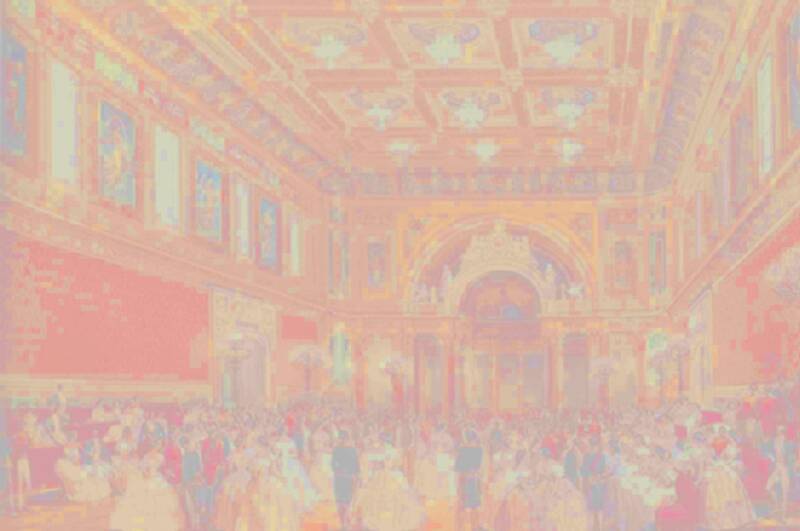


The Belgium-born Louis Haghe is the un-sung hero of the art works here presented. In fact, the site should really be called Louis Haghe lithographs from sketches and paintings by David Roberts, for - in most cases - every line and nuance in the prints are the work of this remarkable man (although it is now known that Haghe employed assistants, including his brother, their work is minimal).
Relatively little is known of his life and no full biography has ever been written. Haghe was born in Tournai on 17 March,1806. Both his father and grandfather were architects and young Louis was encouraged to draw before he could write. At the age of ten he began a five-year curriculum at the college at Tournai in addition to receiving instruction in watercolour by the Chevalier de la Barrière, a French exile then living in town. Fortuitously for Haghe, lithography was emerging throughout Europe as the première means of publishing art reproductions. In fact, he was made assistant to the very first lithographic press in Tournai, founded by de la Barrière (with Dewasme) and, at seventeen, would make his own contribution as lithographer as well as draughtsman to Barrière’s Collection des principales vues des Pays-Bas (1822-3). Through a chance meeting with an Englishman, Haghe came to London shortly thereafter, residing in England for the remainder of his life. Within two years he would become associated with the printer William Day and by 1833 ‘Day & Haghe’ made its first appearance in London directories (although some sources say the firm began its life in 1829). During this decade they would be honoured with being appointed lithographers to the King and Queen.
Painting was Haghe’s first and great love, however, and he was elected one of the foundating members of the New Society of Painters in Water Colours, making his debut at their exhibition in 1835 (a rare example of reproductions of Haghe’s own paintings is his Sketches in Belgium and Germany - printed successively in 1840, 1845, and 1850). After William's death in 1845, the firm became known as 'Day & Son'.
Both Haghe and Day were pioneers in developing the medium of the coloured (or tinted) lithograph, that is, colouring different stones of the same image with a separate tint - giving an ordinary black and white lithograph an additional one or more colours. With his colleagues, Thomas Shotter Boys and W. Gauci, Louis Haghe would be acclaimed as one of the three most important
lithographers of their period. In fact, at the time Haghe left the firm of Day & Son (in 1852), to concentrate exclusively on water colour painting, he had established himself as one of the finest lithographic draughtsmen in Europe, while Day and Haghe had become the leading printers of pictorial lithographs in Britain. All three of the above-mentioned lithographic masters succeeded in producing near-facsimiles of their examples on plates of stone, wood, steel and even earthenware, often without any discernible differences from the originals. A comparison of Roberts’s original drawings, now scattered all over the world, shows us that Haghe not only very accurately copied the representations, but that he also conveyed the spirit of the original work in a masterly way. It should be considered, moreover, that Haghe had only hand at his disposal - since his birth this right hand had been paralyzed. When Moon decided to publish David Roberts’s sketches, the artist himself recommended Haghe (whom he had worked with previously on the Spanish Sketches). His achievement is probably unparalleled (the exhausting project may, in fact, be the reason for Haghe’s premature departure from the business three years later: it should be noted that lithography can be a dangerous profession owing to the caustic nature of many of the chemicals involved). In sum, all words of praise are inadequate to express the value of this lithographer’s work. As Roberts would subsequently state, they were reproduced “with a masterly vigour and boldness which none but a painter like him could have transferred to stone...Haghe has not only surpassed himself, but all that has hitherto been done of a similar nature”. Haghe died at Stockwell on 9 March, 1885, leaving two sons and a daughter. In death he lies near to his fellow artist David Roberts - at Norwood cemetery.
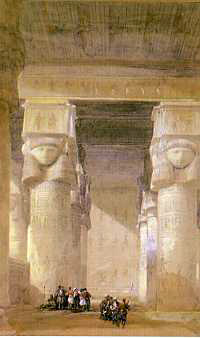
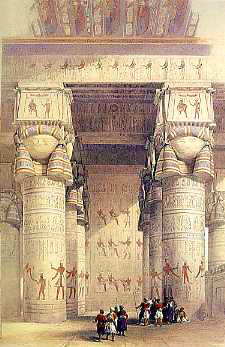
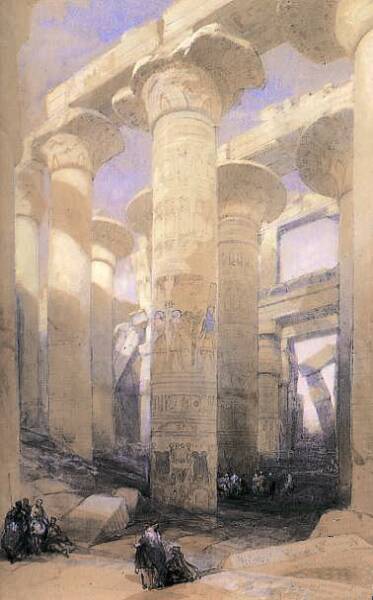
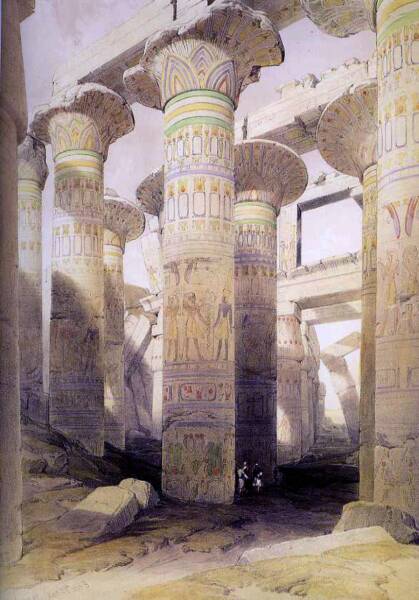
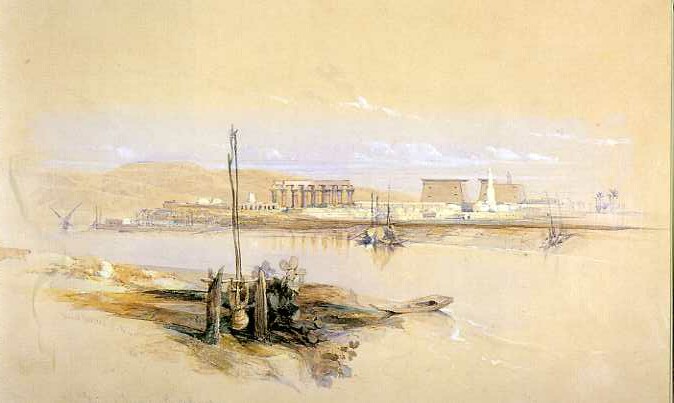
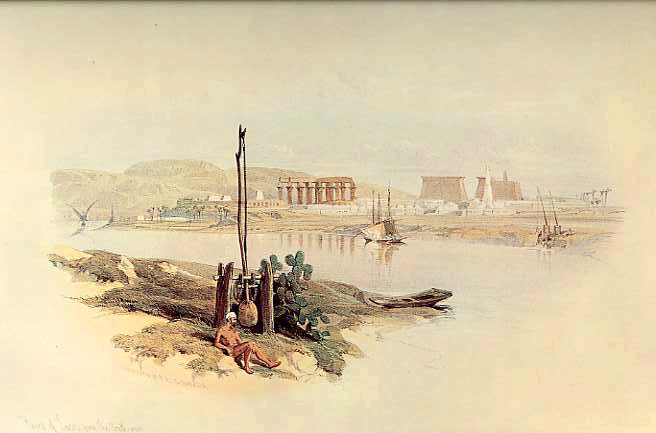
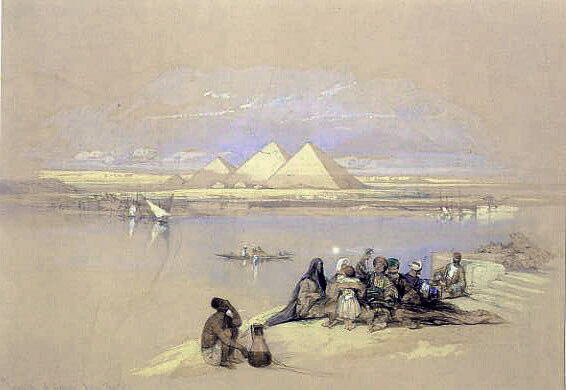
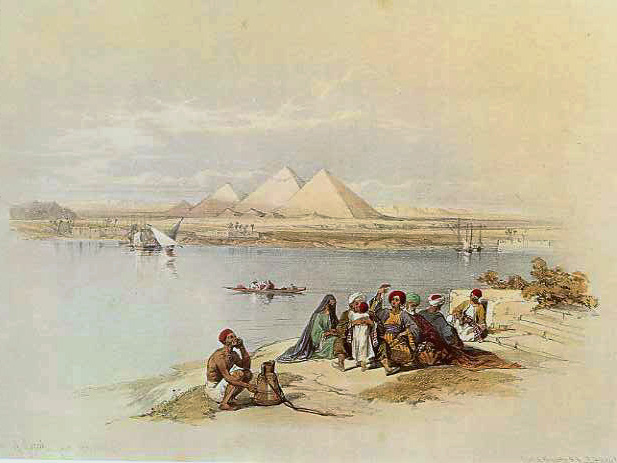
Dendera020, painting by David Roberts
Dendera020, lithograph by Louis Haghe
Karnak, painting by David Roberts
Karnak, lithograph by Louis Haghe
Luxor-Nile, painting by David Roberts
Luxor-Nile, lithograph by Louis Haghe
Pyramids, painting by David Roberts
Pyramids, lithograph by Louis Haghe
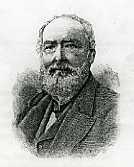
W h o w a s L o u i s H a g h e ?
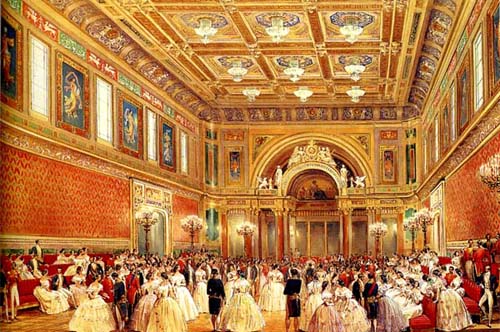
The New Ballroom 1856 -- painting by Louis Haghe